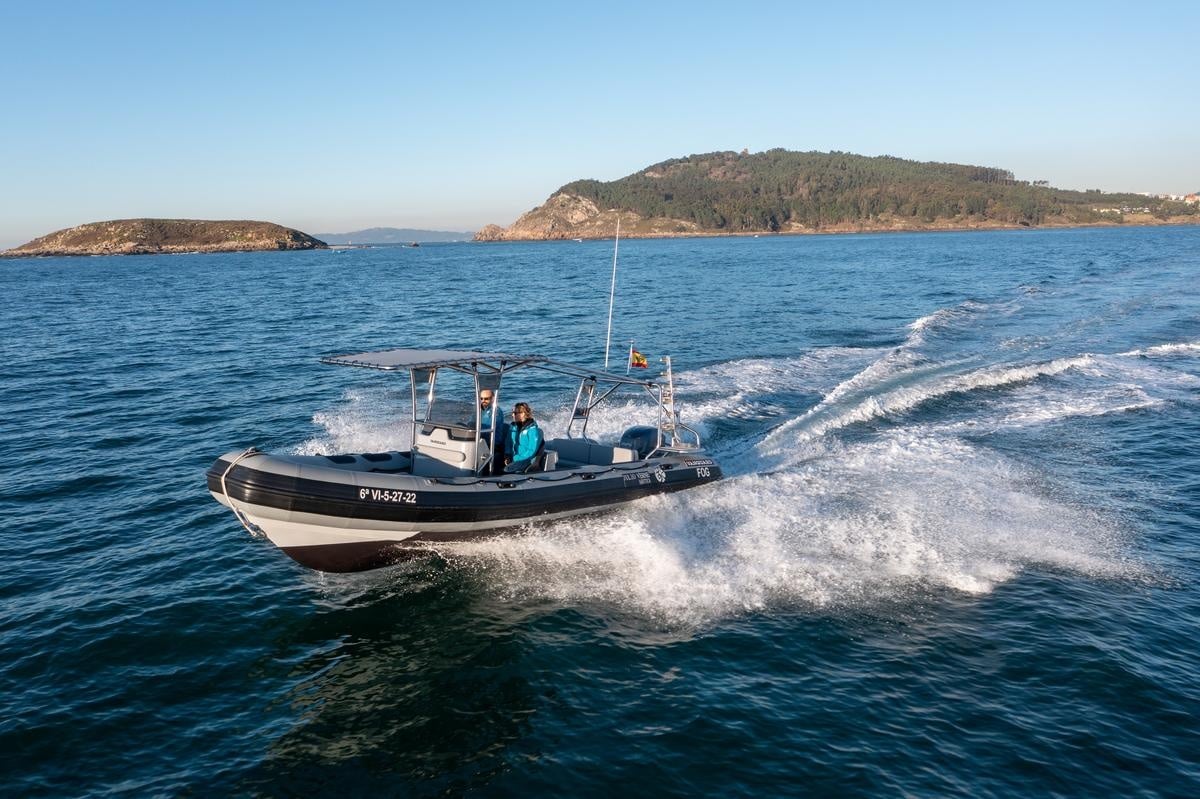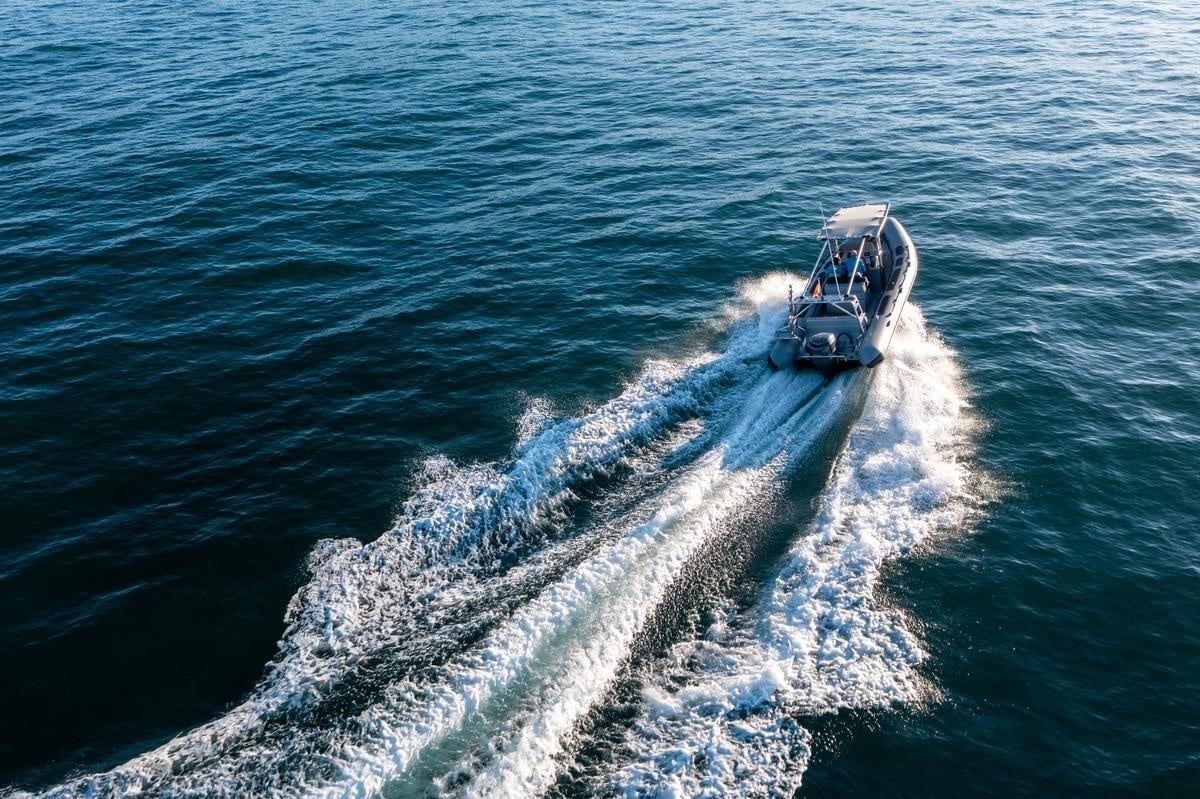powerboat LEVEL 2
Introduction
It is our most popular course and the two-day duration offers plenty of time for both practical instruction and theory. Whilst at first glance the syllabus appears very similar to the level one course the extra time available makes a real difference to the depth in which subjects are covered and therefore the amount a student can learn.
Non previous experience required
No previous sailing experience is necessary. The course equally suits those new to boating and those who have been boating for years. Most people take Level 2 and skip Level 1. It is not necessary to have Level 1 before taking Level 2.
Minimum age
We are generally happy for a child over the age of 12 to attend a course with their parent/guardian on our boats at any time; call to discuss. Children over the age of 16 may attend a regular course at any time, but we must have specific permission from the parent/guardian; call to discuss. If you would like a child under 16 to attend alone, they must attend one of our specific children’s courses, see the Children’s Courses section.
SUMMARY
Duration
2 days from 9am to 5pm.
Location
Vigo estuary, NW Spain. Based in Monte Real Club Yates Baiona.
Price
450€
INSTRUCTOR-STUDENT RATIO
3 students to 1 Instructor and boat..


WHY CHOOSE POWERBOAT TRAINING UK FOR YOUR POWERBOAT LEVEL 2 COURSE?
Our boat: with 7.5m, our main teaching boat, we have invested considerably so that you can use quality kit in excellent condition. Our RIB is fully equipped for training up to Advanced level and is equipped with Icom and Garmin electronics.
Our location and teaching facilities: Monte Real Yacht Club in Baiona is a truly amazing teaching location. Our classrooms are well resourced, professional, clean and tidy. So is our base in Baiona.
Our instructors: We ensure that our instructors teach 100% “best practices” and have a process whereby we constantly review their sessions to ensure that you get the most productive experience from your time with us. They all teach because they love to sail and we work with them to constantly improve their qualifications and experience.
What is included in the course price? When you take your Level 2 course on our boats, the price you pay includes fuel (often charged as an extra at the end of the course by the schools). The price also includes VAT.
Does the course price represent good value? Remember that in life you practically get what you pay for. We do not claim to be the cheapest, but the course will be conducted on first class boats in good condition and led by instructors who guarantee to teach the best current practices. We have excellent facilities in a great marina that offers an excellent experience in all aspects.
Course fee: 450€.
The RYA Powerboat level 2 course is aimed both at those new to boating and those that have boated a while that want to improve their boat handling.
Your instructor will cover the following topics with you during your time with him/her:
- Boat Handling including in confined spaces.
- Boat Handling including in confined spaces.
- Approaching and securing to a buoy
- Anchoring
- Handling a boat at planing speed
- Man overboard
- Launching & recovery
- Navigation to include charts, tides, buoyage
- Undertaking a passage
- The ‘Collision regulations’
The vast majority of the time on this course is spent on the water and out of the classroom.
The time that you do spend in on theory will cover: The types of craft and their respective advantages/disadvantages; engines & drives; use of power tilt & trim tabs; safety checks; personal buoyancy; awareness of other water users; application of the collision regulations (IRPCS); local bylaws; towing and being towed; communication with other craft; emergency action; distress signals; fire precautions and fire fighting and rope work.
On the second day of the course we spent time looking at charts, tides, buoys and using a compass. Using these skills, we then prepared a brief piloting plan and executed it to put into practice the skills developed in the classroom.
Basically, the first day of the course aims to develop your ability to competently handle the boat in close quarters situations, while the second day develops sailing skills and then puts them into practice, ensuring that you have the ability to make short coastal crossings.


Aim:Teach boat handling and seamanship on motorized boats. Minimum age 12 years old, those from 12 to 16 years old will receive a Level 2 Certificate endorsed “The holder should only use motorized boats under the supervision of a responsible adult”.
Within the RYA Powerboat program, the contents of each course are taught at one of three levels. These levels are:
Knowledge of: The subject matter will be briefly explained. Familiarization during the course and where to learn more after the course.
Understands: The subject will be covered in greater depth and you will be asked to demonstrate a basic understanding and go away from the course able to develop your own skill in this area.
Can: The subject will be covered in great depth, including background theory, demonstrations by the instructor and repeated practice by yourself until you can demonstrate good skills in the subject
Launching and recovery
Knowledge of:
- Use of a trailer or launching trolley
- Consideration of launching and sea conditions, including hazards and obstructions
- Number of persons required to launch/recover
- Construction, width and condition of slipway
- Steep/slippery slipways, beach launching, lee shores
- Care of trailer bearings, hitch, lashings, ties, lights and winch
- Trailer parking
Can:
-
- Prepare the boat, lines, fenders, safety equipment, fuel tanks, lines and secure gear on board
- Prepare to go afloat
- Tie relevant knots
Boat handling
Knowledge of:
- Loading: effect on handling and performance, effect on balance and trim, CE Plate and manufacturer’s recommendation
- Handling characteristics of displacement boats, rudder steered craft and shaft driven vessels
Understands:
- Crew members: minimum number in faster craft, keeping a look-out
- The importance of boat control in waves and adequate seating to minimise the possibility of back injury
- Awareness of other water users, including effect of wash
- Steering, controls, effect of current or tidal stream
- Handling a boat at planing speed, trim tabs and power trim
- Planing boats: propeller angle and immersion, shallow drive, planing and displacement speed handling, tiller/console steering
Can:
- Carry out pre-start checks, engine starting and stopping
- Demonstrate the use of an appropriate length kill cord at all times
- Perform low speed manoeuvres including: turning in a confined area, headwind effect, and keeping at bay. Demonstrate awareness of the danger of flooding when going astern.
- Handling a boat at planing speed
Securing to a buoy
Understand:
- Preparation of mooring warp
- Use of a boat hook
- Direction of approach
- Taking way off
- Crew communication
- Making fast
- Procedure when overshooting
Can:
- Approach and secure to buoy
Anchor
knowledge of:
- Types of anchor
- Stowage and attachment to boat
- Preparation of anchor, chain and warp
- Weighing anchor
Understands:
- Correct approach in various conditions
- Taking way off
- Crew communication
- Check holding
- Depth of water, holding ground, scope required
Can:
- Approach and anchor correctly
- Weigh anchor correctly
Departure and arrival
Understand:
- Preparation and use of lines and fenders, attachment to boat, stowage under way
- Speed and angle of approach
- Wind effect
- Method of approach in tidal stream or current
Can:
- Make fast alongside
- Use springs
- Leave – ahead or astern
Man overboard
Knowledge of:
- Recuperación o hombre al agua
Understands:
- Cold shock and immersion hypothermia
- How and when to raise the alarm
Can:
- Take immediate action
- Observe the man overboard
- Carry out the correct return with awareness of propeller
- Approach and recover the ‘man’ in the water (Small weighted buoy to be used)
- Demonstrate both drift down and into wind approach method
- Switch engine off
Knowledge of:
- Types of craft: advantages and disadvantages of different hull forms with respect to sea keeping ability
- Seating arrangements
- Stepped hulls
- Engines and drives: advantages and disadvantages of outboard, inboard and outdrive units, single and twin screws, choice and use of fuels
- Siting of fuel tanks, fuel lines, batteries, wiring, fire extinguishers
- Routine engine maintenance checks, basic fault diagnosis
- Close down procedure
- Advice to inland drivers about coastal waters
- Use and limitations of GPS/Chartplotters
- Application of local byelaws, especially around commercial shipping
Sources of weather information
Understands:
- Awareness of other water users
- Communication with other craft
- Disabled craft
- Emergency action, preventing sinking
- Adrift – alternative means or propulsion
- Actions to be taken by disabled craft and being towed
- Fire precautions and fire fighting
- Distress signals, means of issuing distress, DSC and the Mayday call
Advice for vessels in restricted visibility
Can:
- Apply IRPCS, principally rules 5, 7, 8, 9, 12-18
Knowledge of:
- Byelaws and local regulatins
- Insurance
- Boat registration schemes
Understands:
- Pilotage and passage planning
- Charts, chart symbols, buoyage systems
- Tides and tidal streams
Can:
- Utilice brújulas de dirección y de orientación manualUse steering and hand bearing compasses.
- Undertake practical handling on tidal waters

